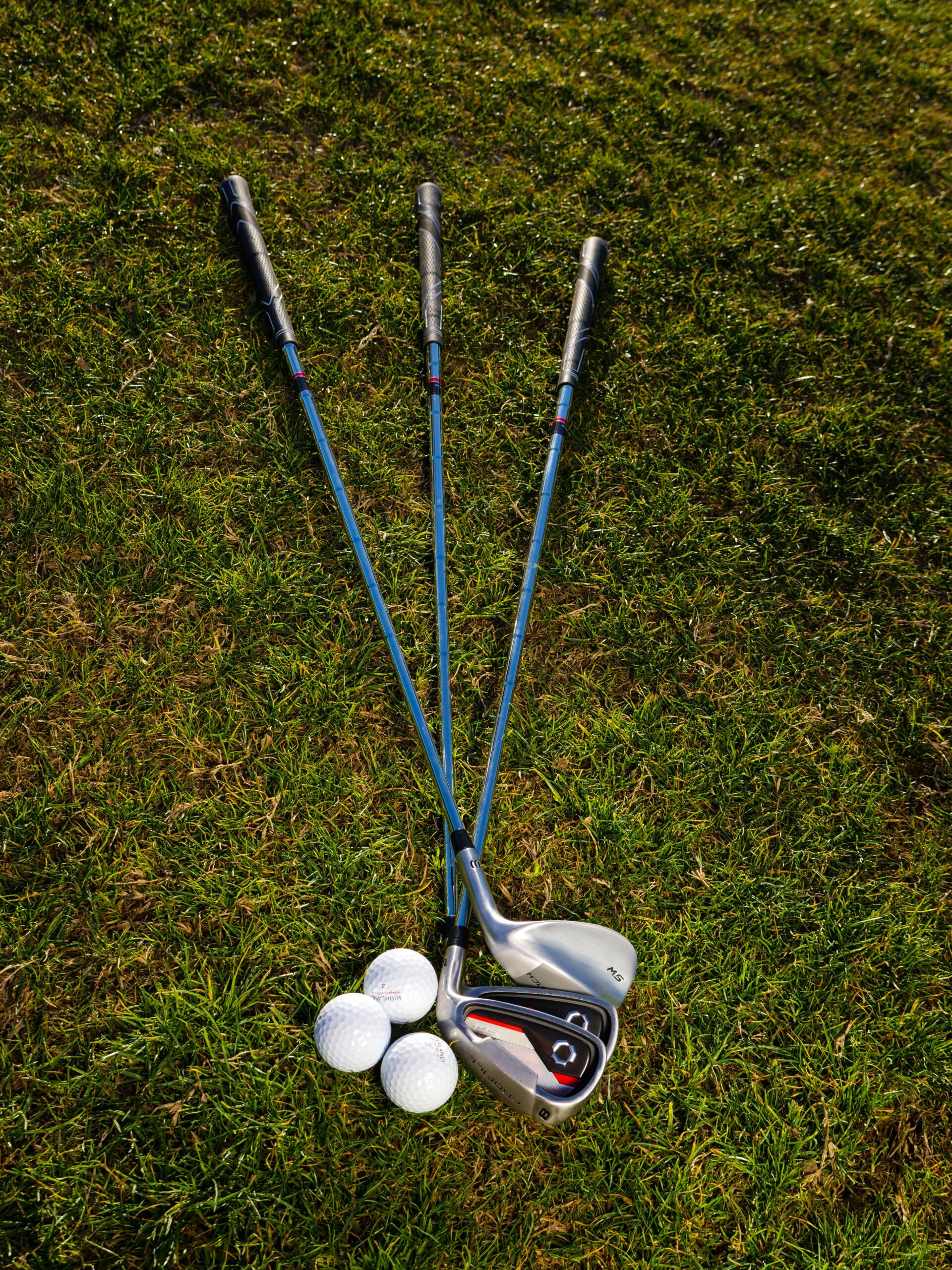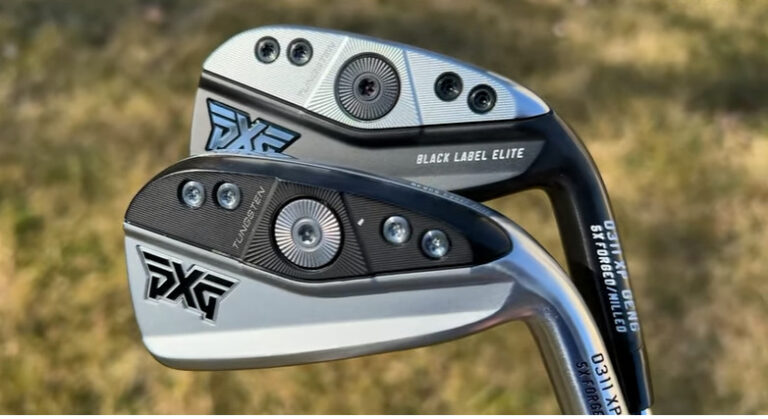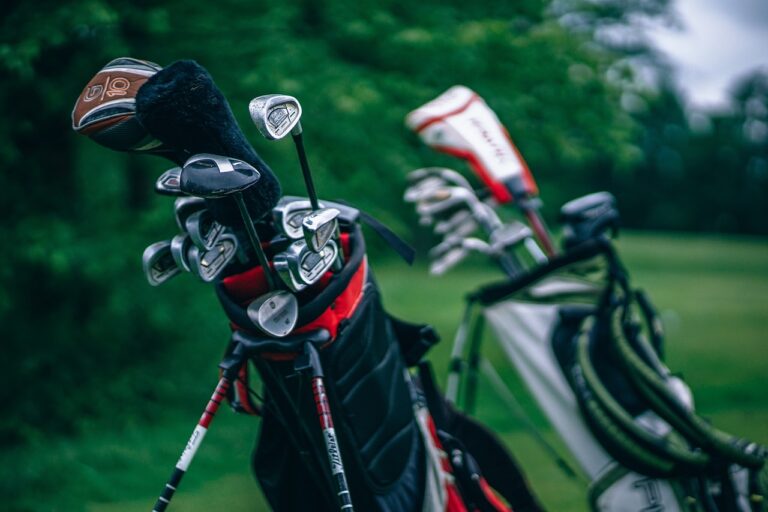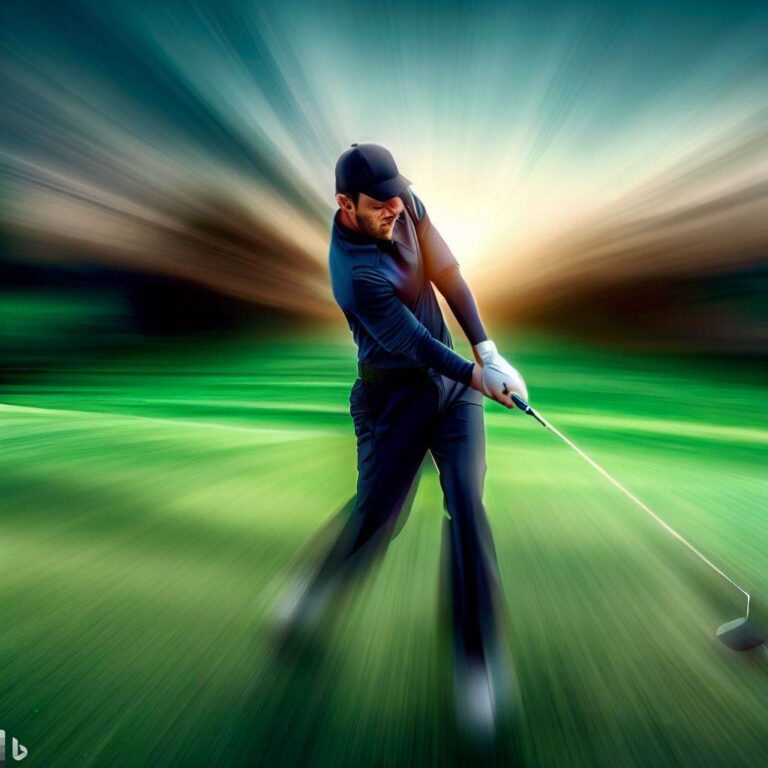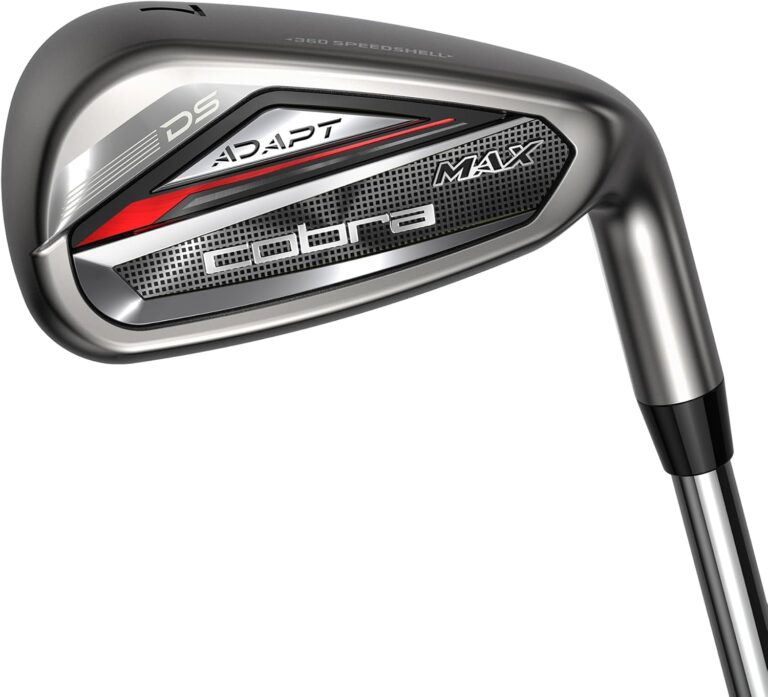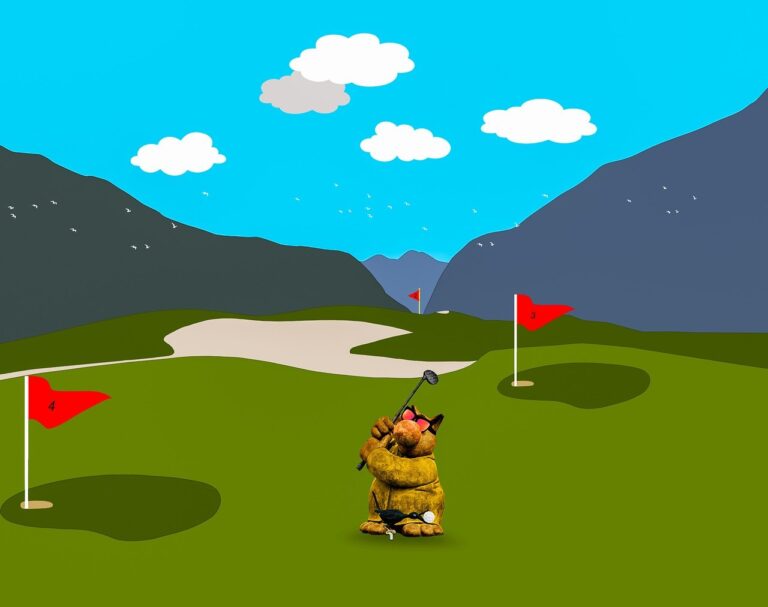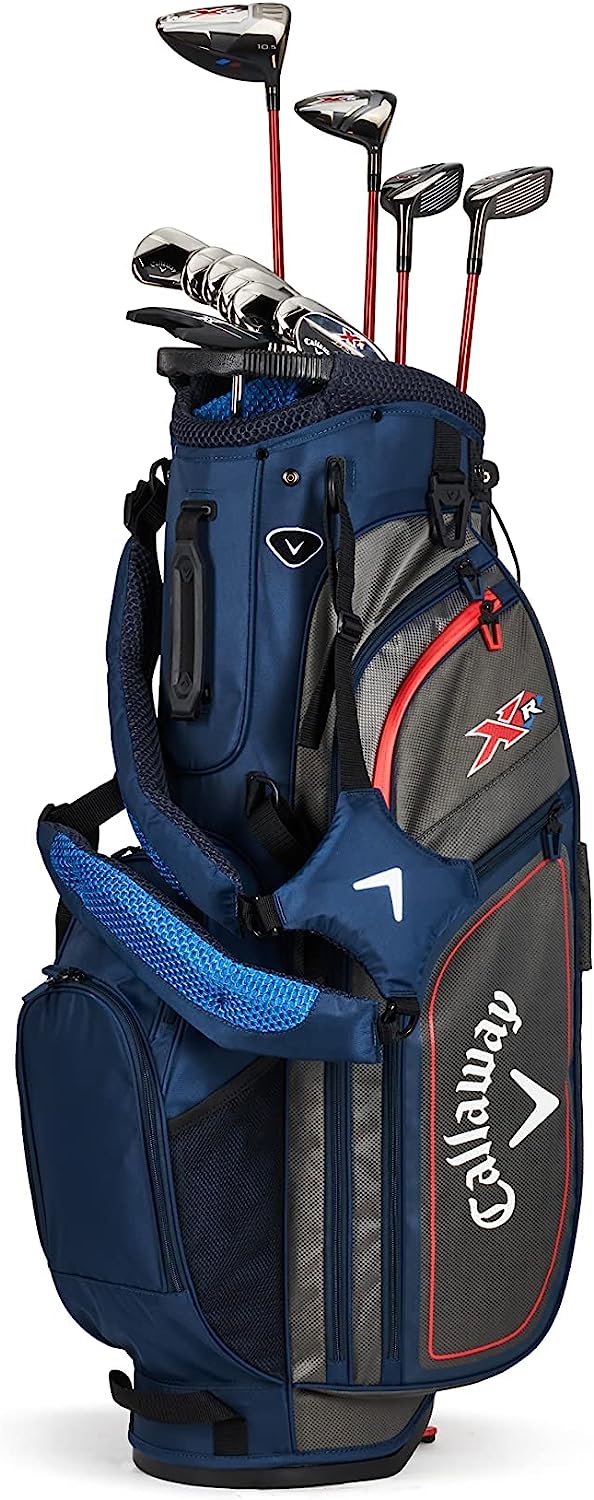How do I find the right irons for me: A Comprehensive Guide
So, how do I find the right irons for me? Many golf enthusiasts, particularly those new to the game, often wonder how they can select the perfect set of irons.
Finding the right set of irons can make a significant difference in a golfer’s game. With so many options available, it can be overwhelming to determine which set is best suited for an individual’s skill level, swing style, and budget. With a little knowledge and research, golfers can find the perfect set of irons to improve their game.
One essential factor to consider when selecting golf irons is your skill level. Novice golfers may benefit from irons with a more oversized clubhead, as it provides a larger sweet spot and more forgiveness on off-center hits.
More experienced golfers may prefer irons with a smaller clubhead, as it provides more control and precision. Additionally, the shaft’s flex and length can impact the player’s swing and ball flight, making it essential to consider when selecting irons.
Another crucial factor to consider is the player’s swing style. Golfers with a slower swing speed may benefit from irons with a lower center of gravity, as it can help launch the ball higher and increase distance. Golfers with a faster swing speed may benefit from irons with a higher center of gravity, as it can help keep the ball flight lower and provide more control.
By considering these factors and doing thorough research, golfers can find the perfect set of irons to improve their game.
How do I find the right irons for me – Understanding Golf Irons
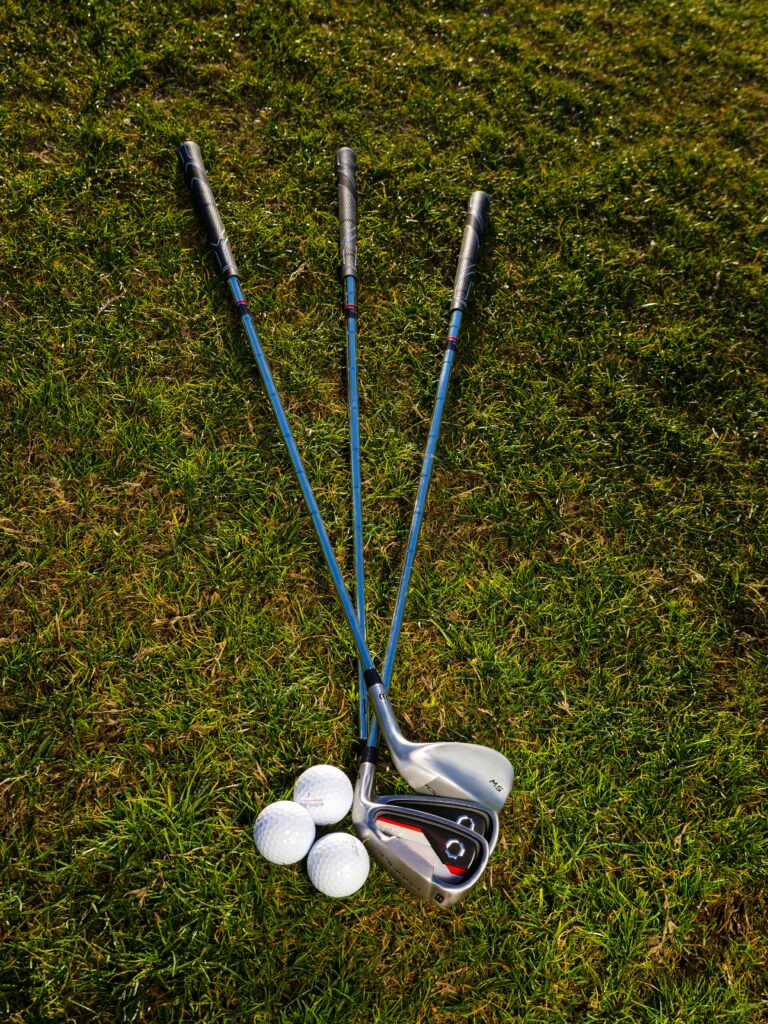
Golf irons are a type of golf club used for hitting shots from the fairway or rough. They are numbered from 1 to 9, with the 1 iron having the lowest loft and longest shaft, and the 9 iron having the highest loft and shortest shaft.
Iron Types
There are several types of golf irons, each designed for a specific purpose. The most common types of irons are:
- Blades: These irons have a small sweet spot and are designed for skilled players who want maximum control and feel. They have a thin profile and minimal offset, which allows for greater workability and shot shaping.
- Cavity Backs: These irons have a larger sweet spot and are designed for mid-to-high handicap players who want forgiveness and distance. They have a cavity in the back of the clubhead, which moves the weight to the perimeter and lowers the center of gravity, making them easier to hit.
- Game Improvement Irons: These irons are designed for high-handicap players who want maximum forgiveness and distance. They have a larger sweet spot and wider sole, which helps get the ball airborne and reduces the chance of hitting the ground before the ball.
Iron Materials
Golf irons are made from a variety of materials, each with its own advantages and disadvantages. The most common materials used for irons are:
- Steel: Steel is the most common material used for iron shafts. It is durable, affordable, and provides a consistent feel. Steel shafts are available in a variety of weights and flexes, making it easy to find the right shaft for your swing.
- Graphite: Graphite shafts are lighter than steel shafts, which can help increase swing speed and distance. They are also more expensive and less durable than steel shafts. Graphite shafts are a good choice for players with slower swing speeds or those who want to reduce the weight of their clubs.
- Titanium: Titanium is a lightweight and strong material used in some iron heads. It allows for a larger sweet spot and greater forgiveness but is more expensive than other materials.
Assessing Your Skill Level

When it comes to selecting the right irons, assessing your skill level is an essential first step. Here are some considerations for different skill levels:
Beginner Considerations
Beginner golfers should look for irons that are forgiving and easy to hit. Game improvement irons are ideal for those who are just starting out. These irons have larger clubheads, wider soles, and more perimeter weighting, which makes them more forgiving on off-center hits.
In addition, beginners should consider graphite shafts, which are lighter and more flexible than steel shafts. This allows for more clubhead speed and distance, which can be especially helpful for those with slower swing speeds.
Intermediate Challenges
Intermediate golfers have likely developed a consistent swing and are ready to start focusing on shot shaping and distance control. For this reason, they may want to consider a set of irons that includes a mix of game improvement and player’s irons.
Player’s irons have smaller clubheads and less perimeter weighting, which allows for greater shot shaping and control. However, they are less forgiving on off-center hits than game improvement irons. By combining the two types of irons, intermediate golfers can enjoy the best of both worlds.
Advanced Player Preferences
Advanced golfers typically have a consistent swing and are looking for irons that can provide maximum control and precision. For this reason, they may want to consider a set of player’s irons.
Player’s irons have smaller clubheads and less perimeter weighting, which allows for greater shot shaping and control. They are also typically made with high-quality materials and offer more customization options.
Advanced golfers may also want to consider steel shafts, which provide more control and feel than graphite shafts. However, they are also heavier and less forgiving, so they require a more consistent swing.
Ultimately, the right irons for you will depend on your skill level, swing style, and personal preferences. By taking the time to assess your needs and try out different options, you can find the perfect set of irons to help you improve your game.
Analyzing Iron Specifications
When it comes to finding the right irons for your game, analyzing iron specifications is crucial. Here are some key factors to consider:
Shaft Flexibility
The flexibility of the shaft can greatly affect the performance of your irons. A more flexible shaft is ideal for golfers with slower swing speeds, as it can help increase the distance of their shots. On the other hand, a stiffer shaft is better suited for golfers with faster swing speeds, as it can provide more control and accuracy.
Clubhead Design
The design of the clubhead can also impact the performance of your irons. A larger clubhead can provide a larger sweet spot, making it easier to hit the ball with accuracy and power. However, a smaller clubhead can offer more control and precision, making it ideal for experienced golfers.
Grip Size
The grip size of your irons can also play a role in your performance on the course. A larger grip can help reduce the amount of wrist action in your swing, leading to more consistent shots. However, a smaller grip can provide more feel and control, which can be beneficial for golfers with a more advanced skill level.
Custom Fitting Process
Importance of Club Fitting
Finding the right irons can be a daunting task, but custom fitting can help golfers find the perfect set of clubs for their body size, swing type, and game level. Custom fitting is a process of customizing the specifications of golf clubs, which involves identifying the player’s strengths and weaknesses and matching specific clubs to suit them. Golfers who want to get the most out of their game should consider getting custom-fitted clubs.
Custom fitting can help golfers improve their accuracy, distance, and consistency. It can also help golfers avoid injuries caused by using clubs that are not suited to their body size and swing type. Custom fitting can help golfers optimize their launch angle, spin rate, and ball speed, which are critical factors in achieving maximum distance and accuracy.
Steps in Custom Fitting
The custom fitting process typically involves the following steps:
- Interview and Assessment: The fitter will ask the golfer about their game, goals, and preferences. The fitter will also assess the golfer’s swing type, ball flight, and impact pattern using launch monitors and other tools.
- Clubhead Selection: The fitter will help the golfer select a clubhead that looks good to their eye, feels good, and performs well. The fitter will normally get the golfer to try at least a few different models to see what suits them best.
- Shaft Selection: The fitter will help the golfer choose the proper shaft, which greatly influences the feel of the irons, not to mention the launch, spin, landing angle, and distance. The fitter will consider the golfer’s swing speed, tempo, and release point when selecting the shaft.
- Grip Selection: The fitter will help the golfer choose the proper grip, which can affect the feel, comfort, and control of the irons. The fitter will consider the golfer’s hand size, grip pressure, and swing type when selecting the grip.
- Length and Lie Angle Adjustment: The fitter will adjust the length and lie angle of the irons to suit the golfer’s body size and swing type. The fitter will consider the golfer’s height, arm length, and posture when adjusting the length and lie angle.
- Making and Testing Minor Tweaks: The fitter will make minor tweaks to the irons, such as adjusting the loft and face angle, to optimize the launch angle, spin rate, and ball speed. The fitter will also test the irons to ensure that they perform well on the course.
By and large, custom fitting is a critical step in finding the right irons for you. By following these steps, a golfer can optimize his game and enjoy the benefits of custom-fitted clubs.
Practical Tips for Selection
Trial and Error
One of the best ways to find the right irons is through trial and error. Golfers can visit a golf store or pro shop and try out different irons to see which ones feel most comfortable and provide the best results. It is important to try out different brands, models, and types of irons to find the best fit. Golfers can also consider borrowing irons from friends or renting clubs at a golf course to try out different options before purchasing.
Seeking Professional Advice
Another way to find the right irons is to seek professional advice from a golf instructor or club fitter. These professionals can analyze a golfer’s swing and recommend irons that are best suited to their skill level and swing characteristics. Club fitting can also help golfers find the right shaft flex, length, and grip size, which can greatly affect the performance of the irons.
Golfers can schedule a club fitting appointment at a local golf store or pro shop to receive professional advice and guidance.
Overall, finding the right irons requires a combination of trial and error and seeking professional advice. Golfers should take the time to research and test different options to find the best fit for their game.
Maintenance and Care
Cleaning Irons
Keeping your irons clean is an essential part of maintaining their performance and longevity. Regular cleaning ensures that dirt, grass, and debris do not accumulate on the clubface, which can affect the spin and accuracy of your shots.
To clean your irons, start by filling a bucket with warm water and a mild dish soap. Dip a soft-bristled brush into the soapy water and gently scrub the clubheads, paying special attention to the grooves. Avoid using abrasive materials that can scratch the surface of the clubhead.
After cleaning, rinse the irons thoroughly with clean water and dry them with a towel. Use a dry towel to remove any remaining moisture, and then let the clubs air dry completely before storing them.
Storage Tips
Proper storage is also crucial for maintaining your irons. When not in use, store your clubs in a dry, cool place, away from direct sunlight and moisture. Avoid leaving them in the trunk of your car or in a damp basement, as this can cause rust and other damage.
Consider investing in a golf bag with individual club dividers to keep your irons separate and prevent them from banging against each other during transport. You can also use headcovers to protect the clubheads from scratches and other damage.
Budget and Investment
When it comes to buying golf irons, budget and investment are two important factors to consider. In this section, we will discuss the cost vs. quality of irons and some second-hand options that you can consider.
Cost vs. Quality
The cost of golf irons can vary greatly, from a few hundred dollars to several thousand dollars. While it may be tempting to go for the cheapest option, it’s important to keep in mind that the quality of the irons can greatly affect your game. Cheaper irons may not be as forgiving or accurate as more expensive options, which can lead to frustration on the course.
On the other hand, investing in high-quality irons can greatly improve your game. They are often made with better materials and technology, which can help with distance, accuracy, and forgiveness. It’s important to find a balance between cost and quality that works for your budget and skill level.
Second-Hand Options
If you’re on a tight budget, second-hand options can be a great way to save money while still getting quality irons. You can often find used irons in good condition at a fraction of the cost of new ones. However, it’s important to be cautious when buying second-hand irons.
Make sure to inspect the clubs thoroughly for any damage or signs of wear and tear. Check the grips, shafts, and heads for any cracks, dents, or scratches. It’s also a good idea to ask about the history of the clubs, such as how often they were used and how they were stored.
Conclusion

Choosing the right irons can be a daunting task, but it doesn’t have to be. By understanding your own skill level, swing speed, and preferences, you can narrow down your choices and find the perfect irons for your game.
When selecting irons, it’s important to consider the type of clubhead, the shaft material, and the flex. For beginners or high handicappers, game improvement irons with a cavity back and perimeter weighting can help increase forgiveness and accuracy. On the other hand, players with more experience may prefer blade irons for greater control and workability.
It’s also important to consider the length and loft of the irons. Longer irons, such as the 3 and 4, can be more difficult to hit and may not be necessary for some golfers. Mid and short irons, including the 5, 6, 7, 8, and 9, are more versatile and can be used for a variety of shots.
Finally, don’t forget to try out different brands and models before making a final decision. Each manufacturer offers a unique set of features and technologies that may appeal to your individual needs and preferences.

